Do you want to find high probability trading setups?
Do you want to develop your own high probability trading strategies?
I’m sure you do, right? (Or you won’t be reading this right now)
But the thing is…
…you’re not sure how.
Instead of looking at price, you’re looking at indicators (without understanding the purpose of it).
Instead of following trends, you’re trying to predict market reversals.
Instead of proper risk management, you put on a huge bet because this trade “feels good”.
Now…
If you’re doing any of the above, then it will be difficult to identify high probability trading setups.
But don’t worry.
I’ve got good news for you.
Because in this post, I’ll teach you step-by-step on how to find high probability trading setups.
Here’s what you’ll learn:
- Why trading with the trend increase your returns and reduce your risk
- How to identify the best areas to trade on your chart
- How to trade pullback, breakouts, and the failure test pattern
- How to set a proper trading stop loss so you don’t get stopped out “too early”
- A high probability trading strategy that lets you profit in bull & bear markets
Are you ready?
Then let’s begin…
Secret Bonus:
The trend gives you the biggest bang for your buck
The definition of the trend is this…
Uptrend – consists of higher highs and lows
Downtrend – consists of lower highs and lows
If you want to know where’s the path of least resistance, look left (and follow the trend).
When the price is in an uptrend, you should stay long. When the price is in a downtrend, you should stay short.
By trading with the trend, you can see that the impulse move (green) goes much more in your favor, compared to the corrective move (red).
Here are a couple of examples…
Now you’re probably wondering:
Rayner, identifying a trend looks easy. But how do I enter an existing trend?
And this is what we’re covering next…
Trade in the direction of the general market. If it’s rising you should be long, if it’s falling you should be short. – Jesse Livermore
How to identify areas of value on your chart
You’d probably heard of the saying, “buy low sell high”.
But the question nobody asks is…
…what’s low and what’s high, right?
This is where Support & Resistance comes into the picture.
Support & Resistance
And this is the definition of it:
Support – an area with potential buying pressure to push price higher (area of value in an uptrend)
Resistance – an area with potential selling pressure to push price lower (area of value in a downtrend)
Here’s what I mean…
Dynamic Support & Resistance
What you’ve seen earlier is what I call, classical Support & Resistance (horizontal lines)
Alternatively, it can come in the form of moving average. This is known as dynamic Support & Resistance (and I use the 20 & 50 EMA).
This is what I mean…
Not only does support & resistance allows you to trade from an area of value, but it also improves your risk to reward and winning rate as well.
Watch this training video below and learn how:
Now, another “trick” you can use is to use overbought/oversold indicators.
High probability trading — using Stochastic to identify areas of value
A big mistake most traders make is, going short just because the price is overbought, or oversold.
Because in a strong trending market, the market can be overbought/oversold for a sustained period of time (and if you’re trading without stops, you risk losing your entire account).
Here’s what I mean:
How do I use Stochastic to identify areas of value?
Here’s the secret…
Are you ready?
In an uptrend, you only look for longs, when the price is oversold.
In a downtrend, you only look for shorts, when the price is overbought.
Here’re some examples:
If you follow this simple rule, you can “predict” when a pullback will usually end.
So, you’ve learned how to identify areas of value on your chart.
Now…
…you’ll learn how to better time your entries.
How to enter your trades
There’re 3 ways you can enter a trade:
- Pullback
- Breakout
- Failure test
Pullback
A pullback is when price temporarily moves against the underlying trend.
In an uptrend, a pullback would be a move a lower.
Here’s an example:
In a downtrend, a pullback would be a move higher.
An example:
According to the work’s of Adam Grimes, trading pullbacks has a statistical edge in the markets as proven here.
You may wonder:
What are the pros and cons of trading pullbacks?
Advantages of trading pullbacks:
- You get a good trade location as you’re buying into an area of value. This gives you a better risk to reward profile.
Disadvantages of trading pullbacks:
- You may potentially miss a move if the price doesn’t come into your identified area.
- You’ll be trading against the underlying momentum.
Breakout
A breakout is when price moves outside of a defined boundary.
The boundary can be defined using classical support & resistance.
Breakout to the upside:
Breakout to the downside:
What are the pros and cons of trading breakouts?
Advantages of trading breakouts:
- You will always capture the move.
- You are trading with the underlying momentum.
Disadvantages of trading breakouts:
- You get a poor trade location as you’re paying a premium.
- You may encounter a lot of false breakouts.
For a more in-depth explanation, go read The Definitive Guide to Trading Pullbacks and Breakouts.
Failure test
This technique possibly originated from Victor Sperandeo, and the works of Adam Grimes shows that it has a statistical edge in the markets.
It works like this…
You’re entering your trade when the price does a false breakout of Support/Resistance. Thus taking advantage of traders who are trapped from trading the breakout.
This entry can be applied in a trending or range market.
Here’re a few examples…
Failure test at (BCO/USD):
Failure test at (USD/SGD):
For further explanation, watch this training video below:
Now, the next thing you’re going to learn is…
How to set your stop loss
Place your stops at a point that, if reached, will reasonably indicate that the trade is wrong, not at a point determined by the maximum dollar amount you are willing to lose. – Bruce Kovner
I’m going to share with you 3 ways to do it:
- Volatility stop
- Structure stop
Volatility stop
A volatility stop takes into account the volatility of the market.
An indicator that measure volatility is the Average True Range (ATR), which can help set your stop loss.
You need to identify the current ATR value and multiply it by a factor of your choice. 2ATR, 3ATR, 4ATR etc.
In the example above, the ATR is 71 pips.
So if you were to place a stop loss of 2ATR, take 2*71 = 142 pips
Your stop loss is 142 pips from your entry.
Pros:
- Your stop loss is based on the volatility of the market
- An objective way to define how much “buffer” you need from your entry
Cons:
- It’s a lagging indicator because it is based on past prices
Structure stop
A structure stop takes into account the structure of the market and set your stop loss accordingly.
An example…
Support is an area where price may potentially trade higher from. In other words, it’s a “barrier” that prevents further price decline.
Thus, it makes sense to have your stop loss below Support. Vice versa for Resistance.
Here’s what I mean:
You want to place your stop loss where there is a structure in the market that can act as a “barrier” for you.
Below is a training video that explains this concept in more detail…
Pros:
- You know exactly when you’re wrong because the market structure has broken
- You’re using “barriers” in the market to prevent the price from hitting your stops
Cons:
- You need wider stop loss if the structure of the market is large (this results in a smaller position size to keep your risk constant)
If you want to learn more, go read 13 ways to set your stop loss to reduce risk and maximise profits.
Now, let’s move on…
What is confluence and how it impacts your trading
Here’s the thing:
You’re not going to enter a long trade just because Stochastic is oversold, or the market is in an uptrend.
You’d need additional “supporting evidence” to give you the signal, to enter the trade. And this “supporting evidence” is known as, confluence.
Confluence is when two or more factors give the same trading signal. E.g. The market is in an uptrend, and price retraces to an area of support.
Here’re two guidelines for you:
1. Not more than four confluence factors
The more confluence you have, the higher the probability of your trade working out. But…
In the real world, your trading strategy should have anywhere between 2 – 4 confluence factors.
Anything more, chances are you’re going to get very little trading setups. And it’ll take you forever before your edge can play out.
You can take mediocre trading setups, and still make money in the long run.
2. Do not have more than one confluence factor in the same category
If you’re going to use indicators (oscillators) to identify overbought/oversold areas, then use that only.
Don’t add Stochastic, RSI and CCI because it’ll leave you with analysis paralysis. Similarly…
…adding simple, exponential and weighted moving average on your charts, doesn’t make any sense.
If you’re still reading at the point, you’re in for a treat. Because here comes the exciting part…
A high probability trading strategy that lets you profit in bull & bear markets
And here’s my secret (which is what you’ve just learned)…
- Trade with the trend
- Trade at areas of value
- Find an entry
- Set my stop loss
- Plan my exit
If a trade meets these 5 criteria, then its a good trade to me.
Now, let’s learn a new trading strategy, that gives you high probability trading setups.
Are you ready?
Here it goes…
If 200ma is pointing higher and the price is above it, then it’s an uptrend (trading with the trend).
If it’s an uptrend, then wait for the price to pullback to an area of support (trading at an area of value).
If price pullback to an area of support, then wait for failure test entry (my entry trigger).
If there’s failure test entry, then go long on next candle’s open (my entry trigger).
If a trade is entered, then place a stop loss below the low of the candle, and take profit at nearest swing high (my exit and profit target).
Vice versa for a downtrend
**Disclaimer: I will not be responsible for any profit or loss resulting from using this trading strategy. Past performance is not an indication of future performance. Please do your own due diligence before risking your hard earned money.
Here’re a few trading examples relevant to forex strategies…
High probability setup at (USD/SGD):
High probability setup at (GBP/AUD):
If you want to learn more forex strategies, then you can read Forex Technical Analysis That Works.
Secret Bonus:
Here’s the thing:
You may not be comfortable using my trading strategy because it may not suit you.
So, what you need to do is, “tweak” it into something that fits you. And this is what we’ll cover next…
I don’t think traders can follow rules for very long unless they reflect their own trading style. – Ed Seykota
How to develop a high probability trading strategy (a template you can use)
You can “mix and match” different trading techniques I’ve shared with you earlier.
But ultimately, your trading strategy needs to answer these 7 questions:
1. How are you going to define a trend?
You can consider moving average, trendline, structure etc.
2. How are you going to define an area of value?
You can consider dynamic Support & Resistance, weekly highs/lows, Stochastic etc.
3. How are you going to enter your trade?
You can consider pullbacks, breakouts, failure test, moving average crossover etc.
4. How are you going to exit your trade?
There’re many ways to exit a trade. Go read 13 Ways to Set Your Stop Loss to Reduce Risk and Maximise Profits to learn more.
5. How much are you going to risk on each trade?
I would suggest risking no more than 1% of your account on each trade, to avoid the risk of ruin.
6. How are you going to manage your trade?
Will you scale out or scale in your trades? If so, how much?
7. Which markets will you be trading?
Are you focusing on one market or many markets?
If you trade a variety of markets, you want to be aware of the correlation between markets.
If you can confidently answer these 7 questions, you're on track to developing one of your own high probability trading strategies.
Frequently asked questions
#1: Will I be able to apply these techniques on the lower timeframes?
Yes, the concepts can be applied to the lower timeframes as these “patterns” will also be visible on the lower timeframes. Also, you’ll get more trading opportunities on the lower timeframes as the market tends to move “faster”.
However, bear in mind if you trade on the lower timeframe, you’ll incur more transaction costs and it will be more stressful compared to trading on the higher timeframe.
Now if you wanna discover some of my intraday trading secrets, then check this out: Intraday Trading Techniques That Work
#2: When the charts are being formed, how do I know if the pullbacks are temporary or if the trend is about to change?
You’ll never know if the market is going to make a pullback or a trend reversal altogether. However, the range of the candles on the pullback will give you a clue.
Usually, on a pullback, the range of the candles are relatively small. Whereas, on a trend reversal, the pullback candles tend to be large.
If you want to discover my trend reversal trading strategy (that actually works), then click on this: The Trend Reversal Trading Strategy Guide
#3: I’m confused about setting up my profit target, could you please enlighten me?
You can refer to swing highs/lows and support/resistance as your possible profit target areas. If you want to ride huge trends then you’ve got to adopt a trend following approach where you’ll have no profit targets but instead trail your stop loss.
If you want to read more on high probability swing trading strategies, then click here: Swing Trading Strategies That Work
So, what’s next?
You’ve just learned how to identify high probability trading setups, and how to develop your own high probability trading strategy.
When you trade it with risk management, discipline, and consistency, you’ll greatly increase the odds of becoming a consistently profitable trader.
These apply to various markets—when you're developing forex strategies or even stock trading strategies.
Here’s what I want you to do right now…



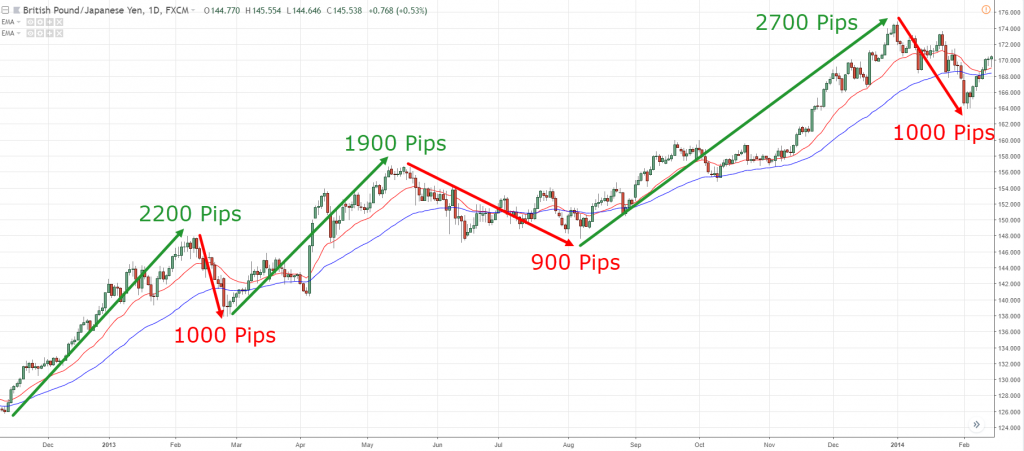
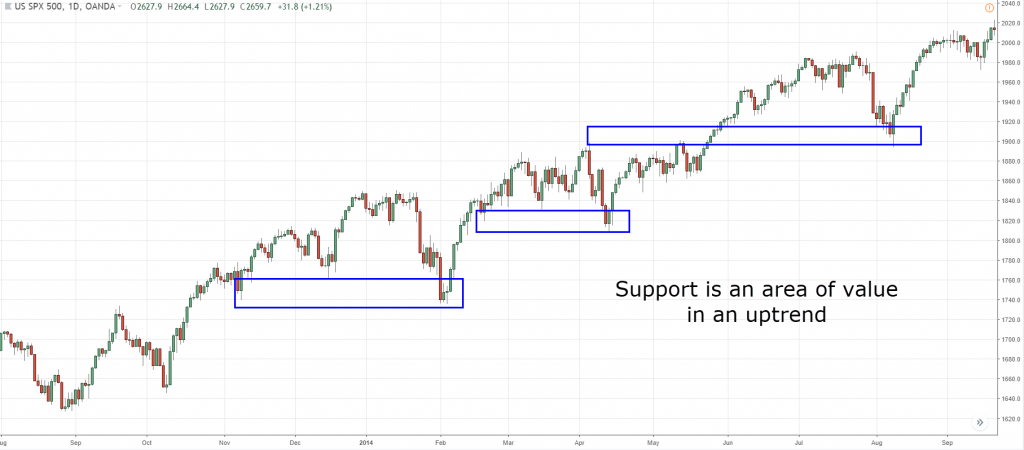
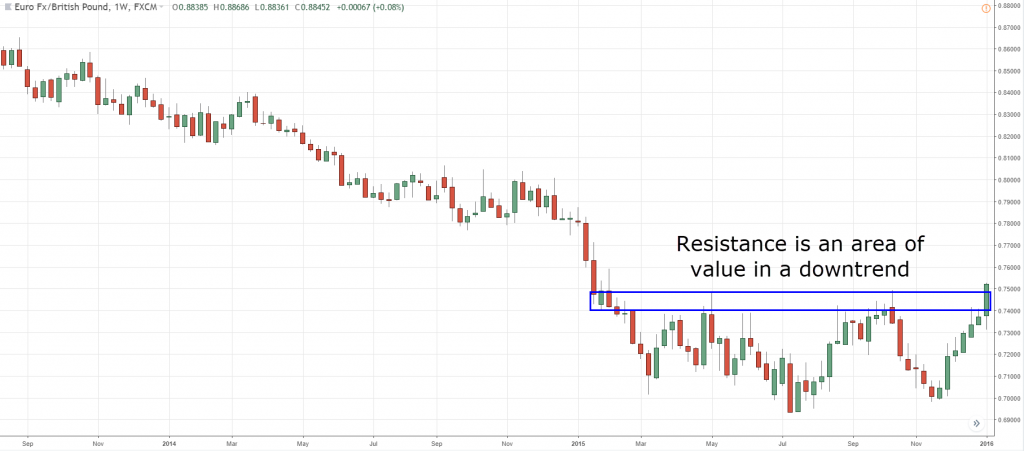
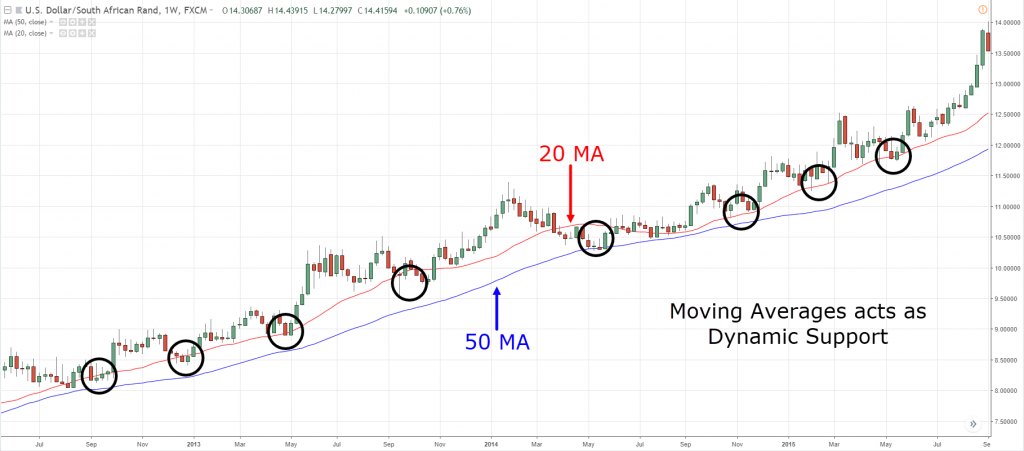
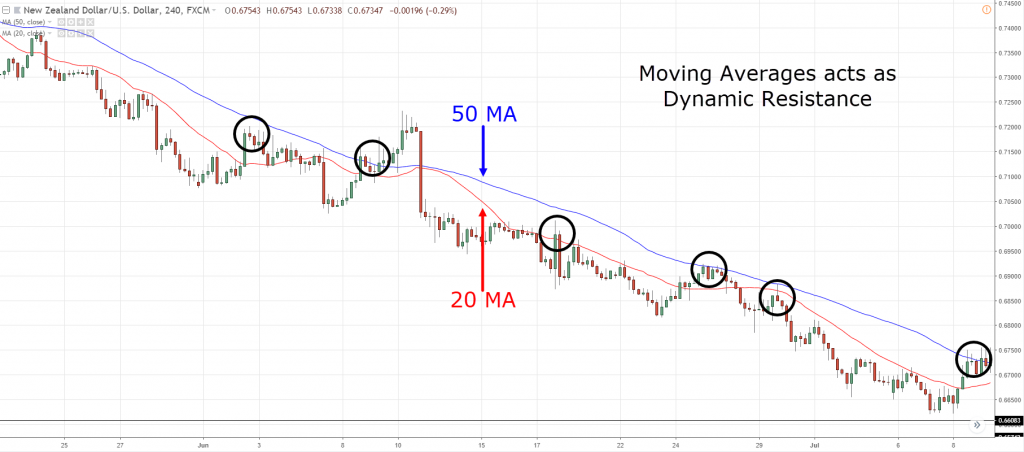
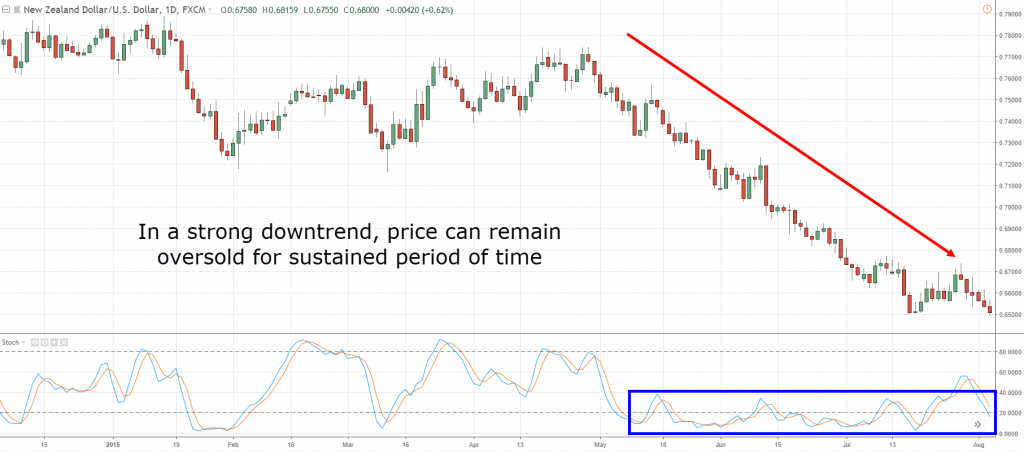
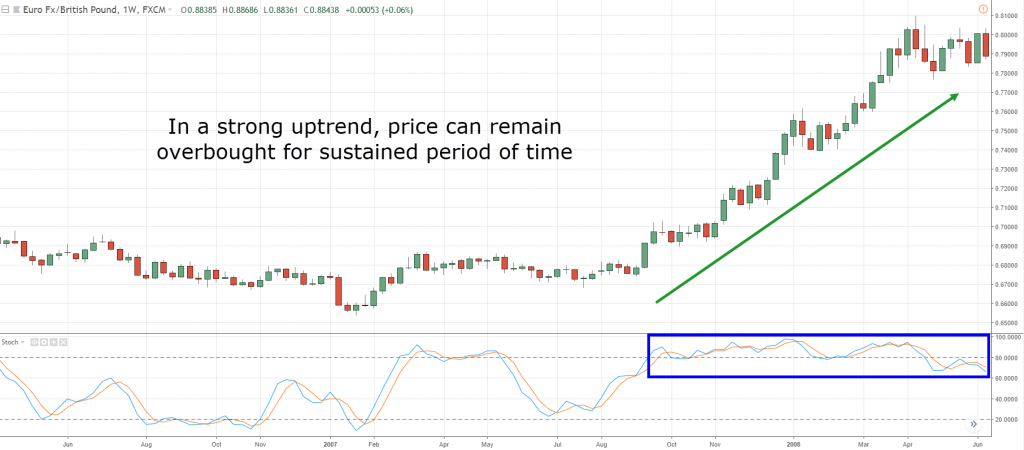
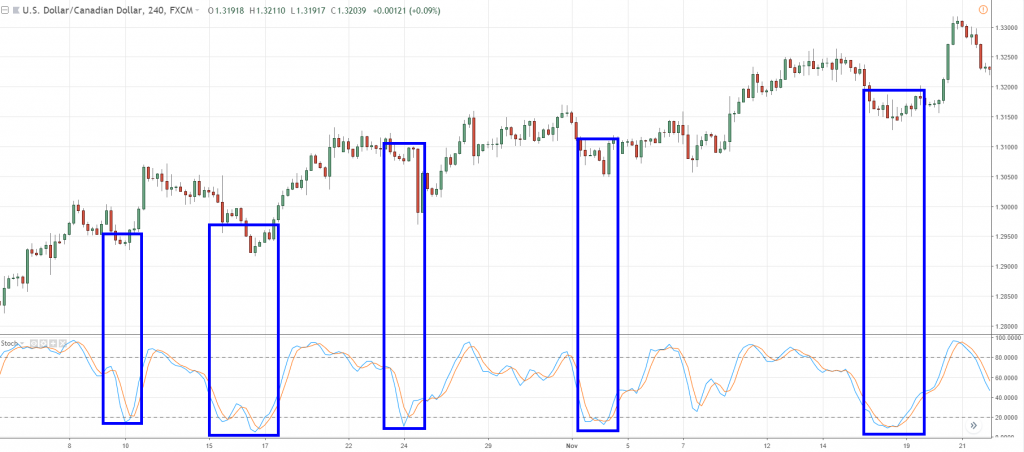
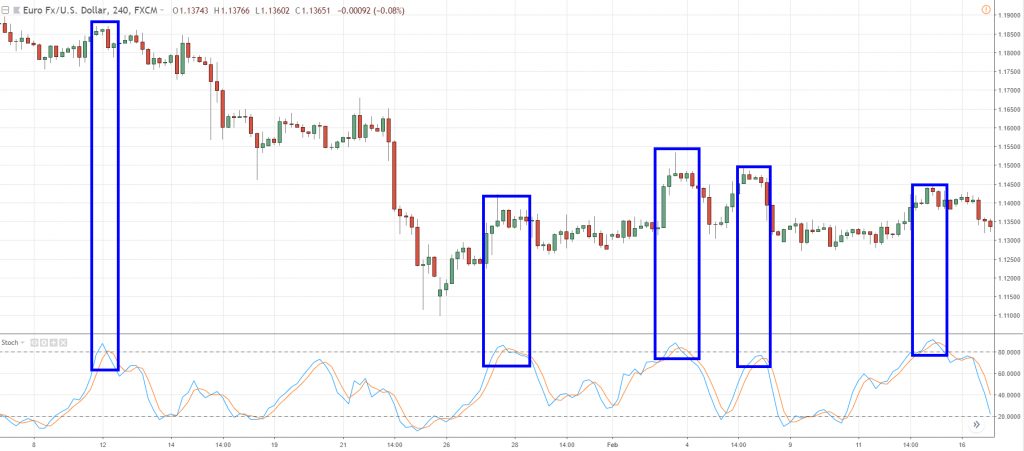
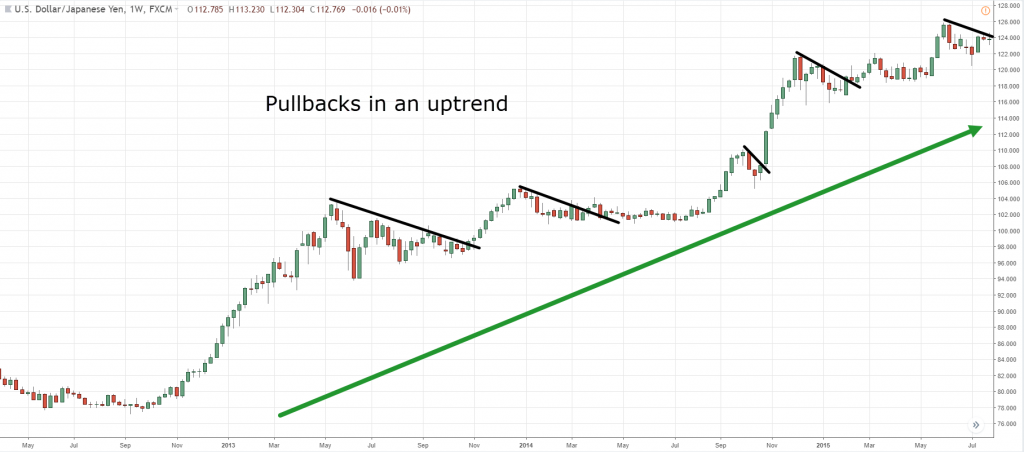
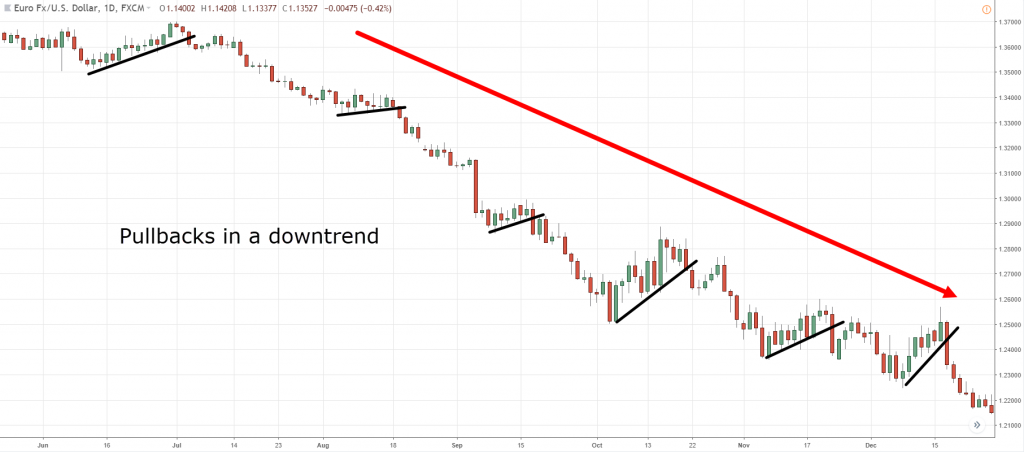
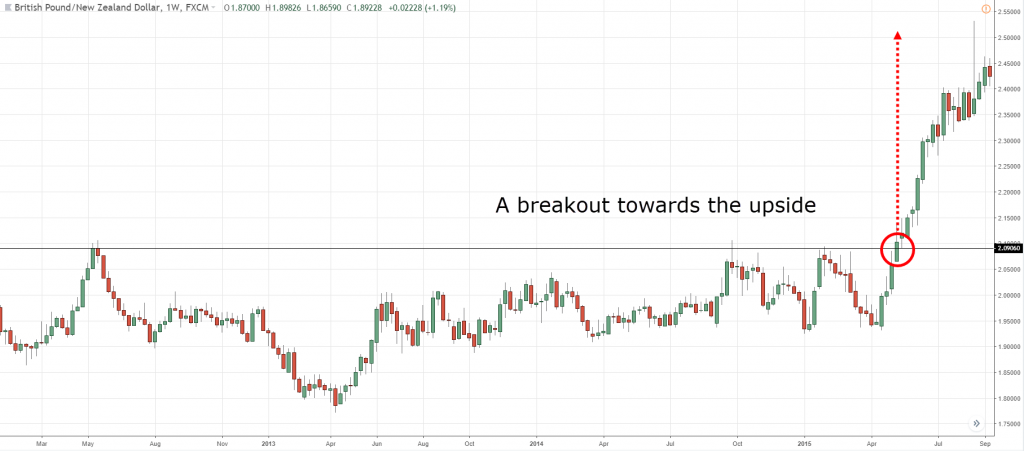
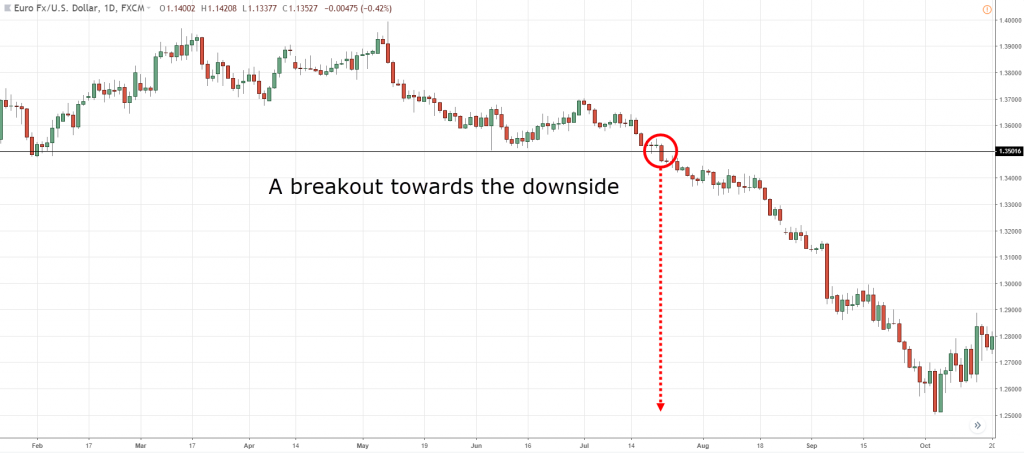
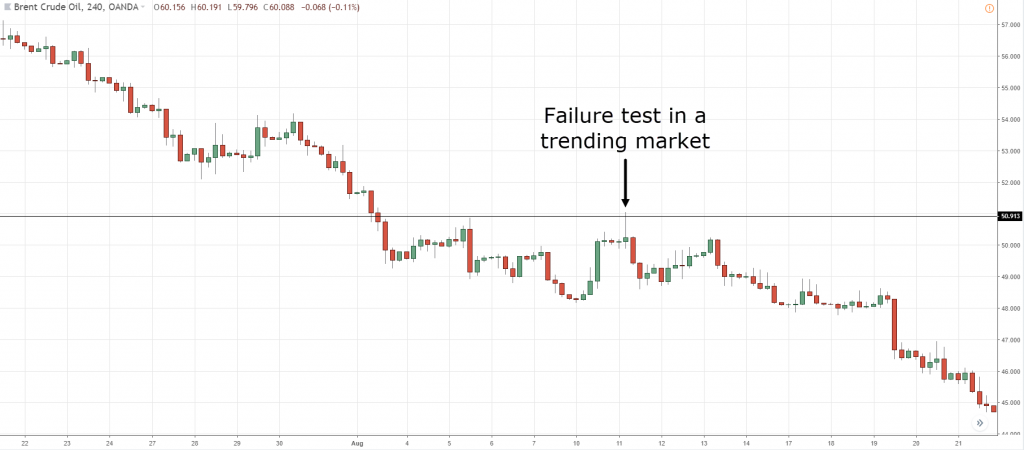

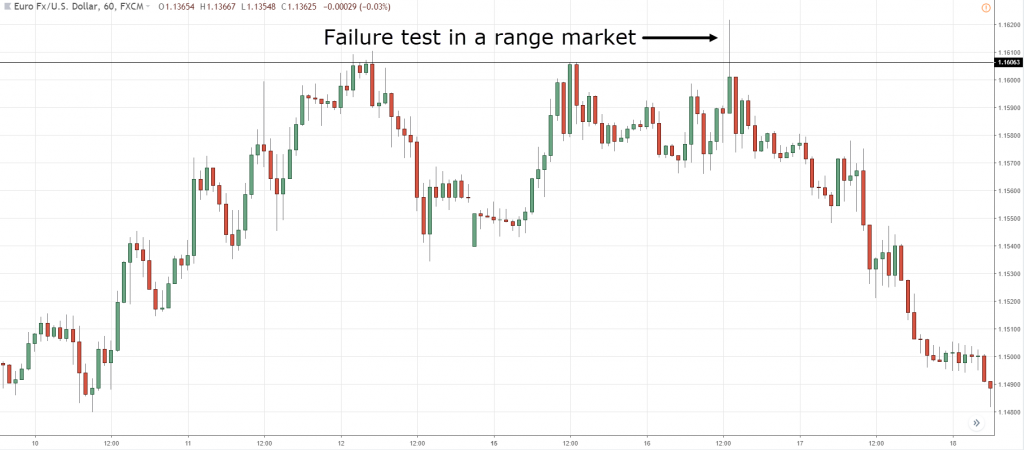
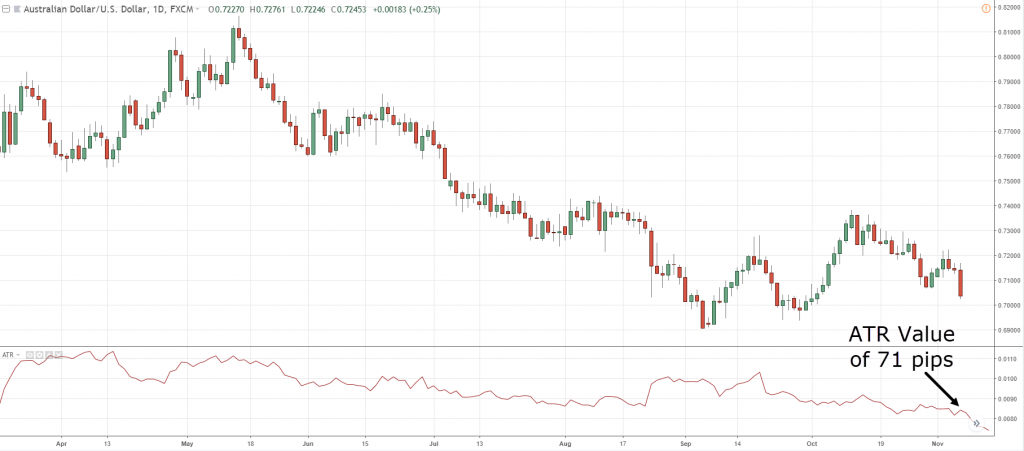
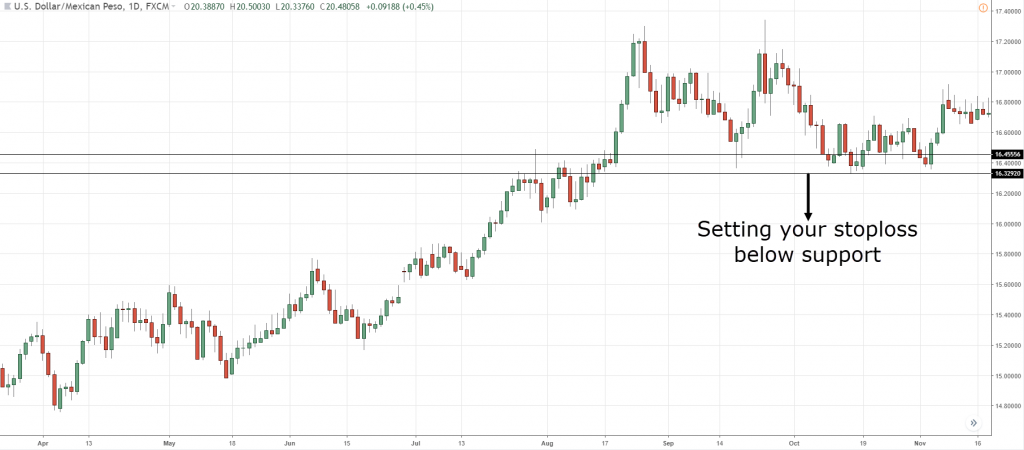
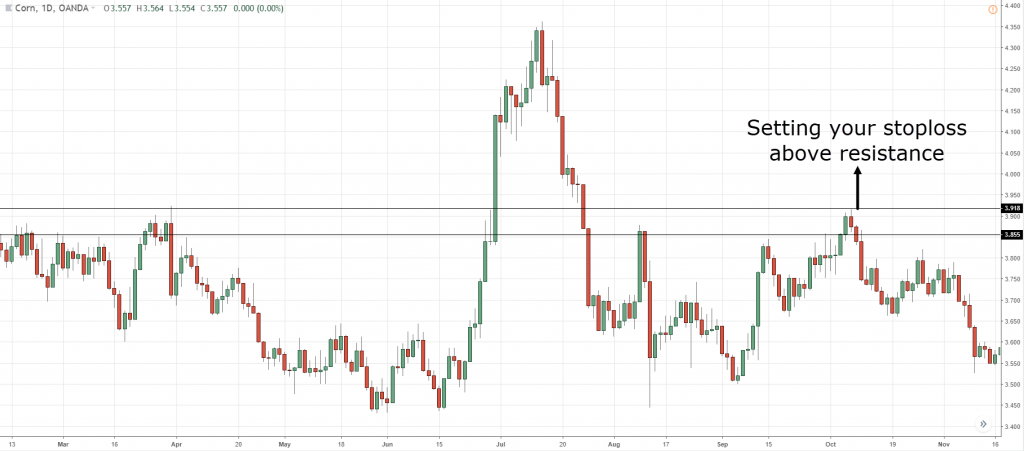
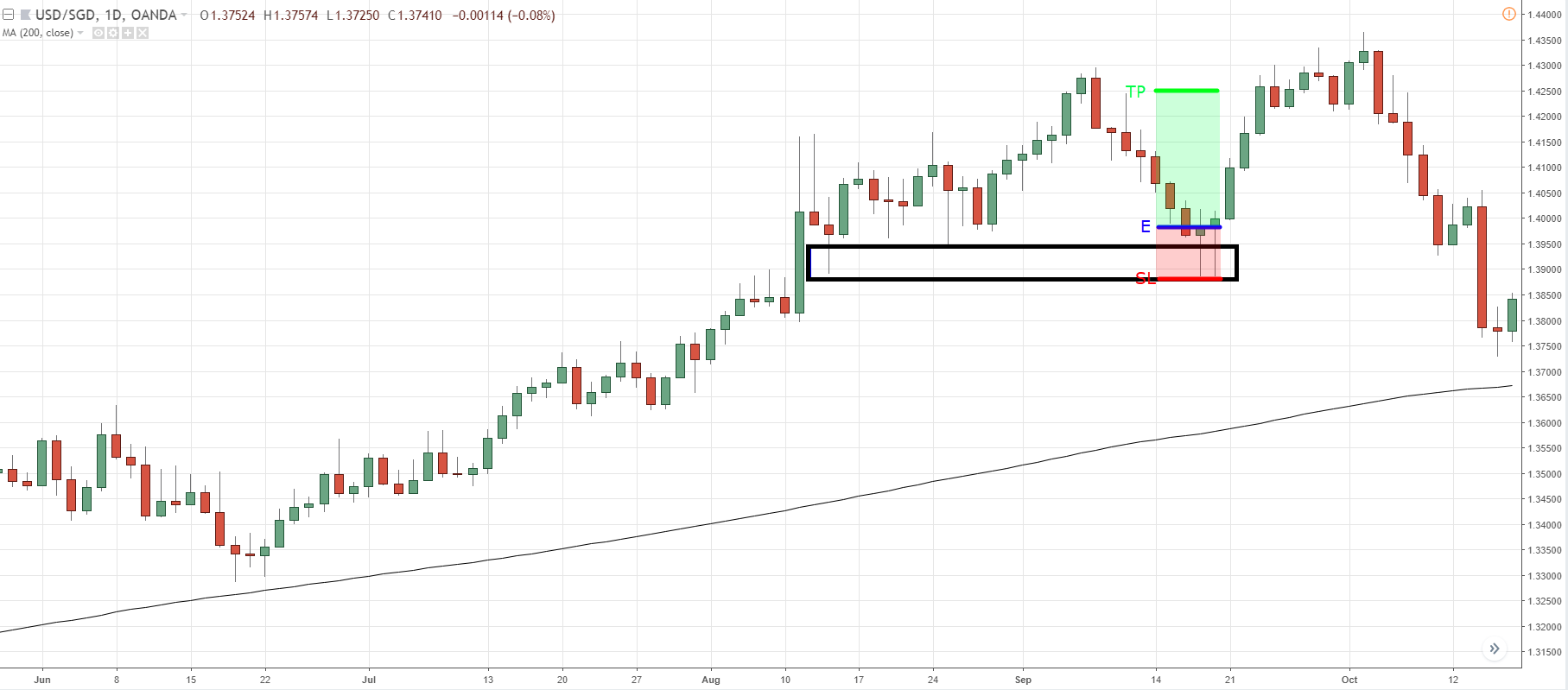
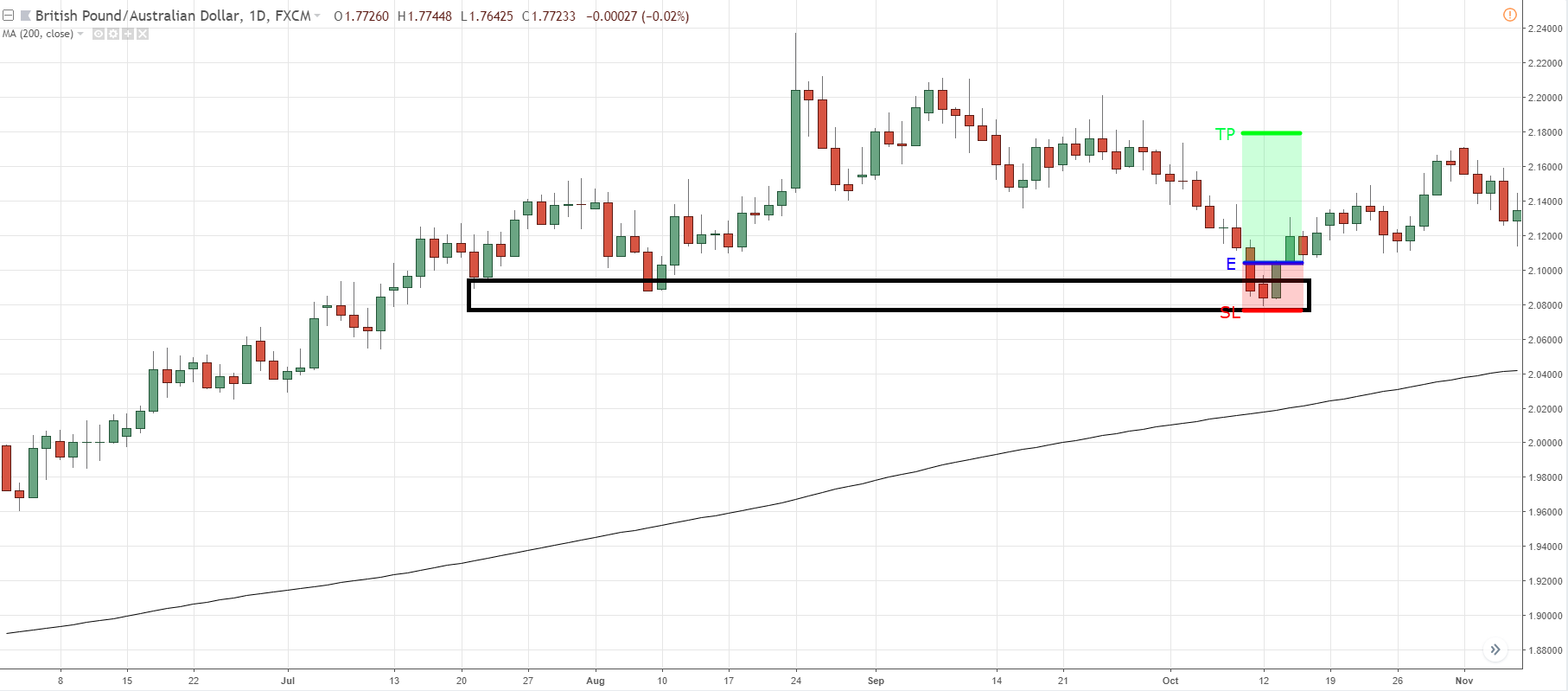
Excellent! I’ve been trading for around 3 years well but applying your methods allowed me to have an even better and consistent result. They say the trend is your best friend but I say trading with Rayner is your best mentor!
Hello Irvinn,
Thank you for your kind words, I really appreciate it.
Don’t hesitate to let me know if there’s anything, I’ll be glad to help.
Rayner
Thank you Rayner, your help is appreciated as learning to trade is so difficult. You put things simply and the charts help visualise what you mean.
You’re welcome, Colin!
I trade only in Indian Markets. Do the principles apply equally to the Indian markets? Can i use the backtest help for Indian Markets also?
Yes it does, and yes you can backtest the Indian markets as well.
Very helpful. Any automation to find such setups
Hi Mohan,
There’s a few stock scanner that you can check out like…
Finfiz and paststat
Rayner
Such a good article, Rayner. Simply and beautifully explained!
Hi Jai,
Thank you for your feedback.
Don’t hesitate to let me know if you’ve got any questions, I’ll be glad to help.
Rayner
Thanks Rayner for all your generous input into helping others.
Well written and excellent advise.
Hey Walter,
You’re welcome. Thanks for stopping by 🙂
Rayner
Another awesome text
Big thanks appreciated very much
enjoy n cheers
life goods feel goods
Hello Ramli,
You’re welcome, glad you enjoyed it.
Rayner
Excellent article – well done Rayner !
This is a good summary of the building blocks of a “trading process” – it is concise, practical and at the right abstraction level for anyone who wants to build their own approach to trading but doesnt know where to start.
I am a full time fx trader (very profitable) and I can confirm the wisdom in your words for myself.
I distilled the same the hard way (lots of trades [trial and error], lots of research[good theory vs bad], actual boom and bust and boom again[you learn when you have lost lots of real money!]).
Trading is not huge mistery when you understand the basics and know where you are in context of the high timeframes.
I would mult-timeframe analysis to the article to make it more holistic for any trader wishing to make the change to be effective and thus financially successful thereafter.
Hi Jay,
Thank you for stopping by.
Yes I agree with what you’ve said. Trading boils down to a few essentials, and really understand it inside out.
Multiple time frame is a good aspect that I’ve yet to cover, thanks for the feedback.
I hope to hear more from you in the near future.
Rayner
Hi Rayner,
This article on how to find high probability setups is very useful. However, I have several clarifications to make which I hope you can enlighten me .
1) Those charts given as examples , are they weekly, daily or hourly charts?
2) The EMAs that you use? Is it 50, 100, 200 or something else?
3) I’m doing scalping most of the time and use 1 min charts. Will I still be able to make use of the techniques you used ? For 1 min charts, which EMA combinations will you recommend?
4) Looking at the charts for both uptrends and downtrends, it is easy to identify on hindsight . But while the charts are being formed, how do I know whether the pullbacks are temporary and will continue upwards for example or will the pull back become a trend direction change?
Some of the pullbacks actually go below the ‘blue EMA” but somehow recover upwards .
When can I add on positions rather than cut loss in case trend reverses ?
Thank you,
Regards,
Joseph
Hello Joseph,
1) You can click on the chart, and look at the top left hand corner to see the time frame.
2) Red is 20, blue is 50 and black is 200
3) If i’m scalping, i’ll still use the same moving average when trading.
4) Yes on hindsight it looks easy. But the charts here are simply to illustrate a point, and not make trading seem easy. What you can do is to wait for a candle to close in your favor, before entering your trade.
I never average into losers, only winners.
Let me know if that answer your questions 🙂
Rayner
Hi rayner,thank you so much for giving your time and expertise to help others.im just starting and learning the very basics at the moment (baby steps) so your help is greatfully received.i will bookmark this page and continue to learn from it as time goes by.once again it’s really nice to see someone sharing and helping others.it great when you simplify especially for newbies.im not trading yet as I need to learn the very basics, terminology,simple chart reading and knowing when and how to trade successfully part time.i live in London England and have been losing money (£85,000) over 5 years from my own stupidity not knowing what I was doing basically gambling,hoping,wishing etc.but this year I start from scratch the RIGHT WAY and learn as much as I can before I start.your willingness to share your experiences and knowledge will help me one day to say … I got it all back and more… Thanks again Rayner and best wishes on 2016 trading you deserve to be a winner.
Hi John,
Thank you for sharing your experience and I’m glad you find the materials useful.
Don’t hesitate to let me know if there’s anything, I’ll be glad to help.
Rayner
Every bit of this article is well understood, and it is a beautiful one. I appreciate your for that. You’ve help me solved some puzzles. But the area of trading with trend is still a bit confusing to me.
Hey Pauline,
Glad you found it useful.
I believe this post here can help you with trading the trend https://www.tradingwithrayner.com/trend-following/
Rayner
Hi Rayner, firstly , congratulations on your new arrival, looks gorgeous.
secondly, thanks for all your fantastic and informative posts, videos, etc. it has really helped me to grasp the market flow.
I wish I had met you years ago, but like all student traders , we need to loose to be able to learn.
keep up the good work, regards Robin.
Hello Robin,
Thank you for your kind words, yes she’s amazing!
No worries about the learning curve, it’s something all traders go through, else we can’t call ourselves “trader” right?
If there’s anything, don’t hesitate to let me know. I’ll be glad to help.
Rayner
Hi Rayner
The article is so truth in trading.
It is so transparent (no bull, pardon my word)
It so useful as a guide in trades.
I wish I’ve leaned this in my early years instead of going thru heartaches!
Congrats & salute your honestly in sharing your trading methodology!
God bless u abundantly!
Hello Jeffrey,
Thank you for your comments, I appreciate it.
Don’t hesitate to let me know if there’s anything, I’ll be glad to help.
Rayner
Thanks and appreciate. Clear essence from trading comes from wisdom from a real trader. I have been trading stocks for five years, many up and downs, looking what can works, and realize it all comes down to the 7 points u mentioned. Kudos.
Hi Hans,
Thank you for your kind words.
After trading for years, you’d realized trading only boils down to a few essentials, and you can ignore the rest.
Rayner
Hi Rayner, you are one of Singapore up and coming young trader, keep up the good work, hope to meet you in person one day . Cheers
Hi Wayne,
Thank you for your kind words, appreciate it.
Rayner
Most of the charts you have posted are yearly charts, Traders dont hold any stock for years only investors do that. Few things works on just papers not in reality. I am sure even you don’t do trades where you hold the stock for years.
1. What I’ve shared isn’t an exact strategy per a set of guiding principles. I’ve seen it work firsthand for myself and students across different timeframes.
2. I’m not sure where you get the idea that trading on daily charts mean you have to hold a trade for years. Go check out Steve from Newtraderu. He trades on the daily charts and holds his trades for days, sometimes weeks.
Or Gary in my facebook group. He trades the daily chart and holds his trades from a few days to weeks as well.
3. Before you claim it doesn’t work in reality…
Have you developed your own trading plan around this set of guiding principles?
Have you traded it consistently for at least 100 trades?
Do you have a trading journal to record the stats?
It’s easy to trash talk.
But putting in the hard work to succeed is entirely different.
You are doing great work here. All you Ave said is true. But one thing a lot of upcoming trader lack is Discipline & Patience.
Hi Sofolahan,
True that. That’s something I’m still trying to work on to help traders improve their discipline and patience.
Thanks for stopping by!
Rayner
hi Rayner , very good article , I was wondering do you use stochastic yourself ? I thought you didnt use indicators other than MA ans ATR . thanks
Hi Patrick,
I don’t use Stochastic in my trading. But I’m sharing on how a trader could use it if they’re interested.
Rayner
Hi Rayner,
Good writing for reading and understanding the trading strategy. Really appreciate you are sharing your thoughts and knowledge in trading. But i need a few recommendation from you, as a retail trader, im looking to plot my trading logs whether profit or loss on monthly basis.
1. In trend trading, how do i define risk reward ratio? I’ve seen the video you posted, but still a bit lost.
2. What time frame do you think would work the best? In order for me to track my losses or profit monthly basis.
3. If i need confluence confirmation, what would be the next confluence strategy?
4. How do i still make money even if i have 5 winning trade and 5 losing trade?
Zali Qifty
Hi Zali,
1) I don’t have a fixed risk reward in trend following because I don’t have a pre-defined target
2) Daily is a good place to start
3) SR and moving average are useful
4) Your winners have to be larger than losers
I hope this helps 🙂
Rayner
Great article. I have learnt a lot. The failure test for picking an entry – will the “failed” candle be a pinbar? Greatful for your response.
Glad to hear that, Eric.
Don’t hesitate to let me know if there’s anything, I’ll be glad to help.
Great article and video. There is one very important aspect for most traders including myself is FEAR. Any advice. Thanks for your time and work.
Hi Abdul
I believe this post can help…
https://www.tradingwithrayner.com/how-to-overcome-your-fears-in-trading/
Hi
You posted Amazing trading aspects. I have been following similar trade setup. But, on reading this post, i have fine tuned my trading plan. Without any doubts, i have confidence to improve my trading result with your inputs.
With best regards
Sam
Awesome to hear that, Sam.
Keep me updated on your progress, cheers
This is fantastic.may you send more trading strategies and information to aromagadzire@gmail.com
Hey Aaron,
Everything I have is shared on my website bud.
LOVE YOU DUDE… VERY USEFUL… GOD BLESS U…BE HAPPY ALWAYS CHEERSSSS
cheers Shekar
You mention that you take profit near the swing high in an uptrend. How exactly do you determine this point?
This video will help…
https://www.tradingwithrayner.com/2-how-to-know-when-is-the-best-time-to-exit-your-trades/
Excellent article, thank you Rayner teo
You’re welcome bud
very easy to study
thanks sir
cheers
Very clear, thank you
Cheers
Hi Rayner
It is a masterpiece article. Very useful in summarizing the key strategies for a high prob trade. It is helpful. You have a good day
Thanks.
Thank you!
thank you so much. ill study more you send..ray can i ask your help in 1 minute trading strategy?
I’m not a scalper.
Hi Rayner,
this is dr.zamir from india.
i really loved your risk to reward vedio.its too good.
thanks for that.
iam a trader for the past 5 years,but no good results.but i want to try more and more….. until one day??????
wish me all the best.
take care.
zamir
All the best Zamir!
Nice write up bro,
but i am trying to focus more on pure Price Action trading especially at Support and Resistance areas only.
I dont need lagging indicators except maybe for Moving Averages for now.
Is that what you are into also?
I applied for your Free book on this same Price Action but i am yet to receive it.
Thank you
Hey Emeka
I trade in a similar manner. If you haven’t received it, just shoot me an email and I’ll send em over.
God of the universe will bless you and always be your guide, you will never lack Rayner #bless.
Thank you Albert!
Hello Ray
Am short of words…HMM. Ur materials are so simple and easy to understand. You are such a blessing to me. God bless you richly and make you great and strong. You are my mentor.
I’m happy to hear it helped cheers
thank you ray big time help for me this blog i will do my part to apply and improve what learn from you
You’re welcome, Francis!
Mind blowing articles
I appreciate your kind words.
Hi Rayner,
I started following your article and your way of tutorial is so easy to understand and such a big help for me as a newbie. Hope to learn a lot from your trading guide.
Thanks for sharing your knowledge. Keep it up.
I’m glad to hear that!
This is cleard explanation and easy to understand Thank you Rayner, i’ve learnd a lot from your vedio ..Hugss
cheers
Very Good sir
Thanks Vijay!
Hi,
Rayner sir, really above information that you gave so good.
I want more information about swing trading and position trading. Can you provide it by makin video.
thanks.
I’ll look into it…
Hi Rayner
Thank you for sharing this is very helpfull for me as a newbie .
GOD bless you and more success!
Welcome!
Thank you lot it is so easy to understand god bless rayner.
once more thank you.
I appreciate it.
How do you exit when trading with the trend using the stockastic?
These post will help with your exits…
https://www.tradingwithrayner.com/set-stoploss/
https://www.tradingwithrayner.com/2-how-to-know-when-is-the-best-time-to-exit-your-trades/
Thanks for the work and teaching u have done.really appreciate it and may we all learn and better a better and bright student in the market.cheers
You’re welcome, Kelynn!
After watching your video, I changed my view on market, And also I made profit today, with confidentiality, THANK U SIR, U R REALLY GREAT, I want to know about option strategy with easy way, please share ur knowledge with ur followers, I am waiting THANK U once a gain
I don’t trade options, cheers.
Hi Rayner, thanks for the work I really appreciate it, I will give it a go.
Just a quick question that Im trying to get my head around, do you need to enter every trade set-up that comes along or do you enter when you have time?
The reason I ask this is that taking a set-up during a range bound market can easily get you stopped out but the next entry could also be the start of a trend. If you had taken every set-up you would be in right at the start of the trend (even though you would have your share losses getting there!).
Or is the discretionary entry better as it works out over the life of the system and therefore you don’t have to sit in front of the computer waiting for the next set-up that you have to trade?
Does that make sense coming from a Nubbie?
Hi Simon
I try my best to take every setup that comes along.
If you get stopped out often, it’s nothing to do with your frequency of trades but the placement of your stop loss.
Hi thank you for sharing your knowledge.
I learned a lot and it inspired to make my own trading technique to be successful also.
looking forward for more of your insights.
Continue to Bless other people.
Thanks and God Bless.
You’re welcome, Mona.
Nice job you are doing SIR, Great Article, so easily graspable looks like newbies like me can also earn profit in the market.
Thanks.
You’re welcome!
Your guidelins so good and very useful for trading. I want to thank you and all the best
My pleasure!
Thank you for ur support, is these support to stock or only for currency trading
The concepts can be applied to both stocks and Forex.
Thanks for this learning Rayner usefull to know trading
God bless you
Cheers
REMEMBER: ONLY LOSERS share trading strategies.
REMEMBER: ONLY TROLLS leave a comment like that.
I’m really impressed with you insightful ideas, clarity of your explanations and the enthusiasm of your delivery. Despite all these, trolls still appear. Keep up the good work as a lot more people are grateful.
hey rayner i wanted to ask if all of your content can be applied to stocks or just some of it and the rest to forex? and i really like your content and how you explain it its very clear. thank you.
Hey Adam
The concepts and principles can be applied the same.
Thanks man
But I thought u are going to send it in a pdf format so we can read it over again as much as we want
Just sign up for it using the link above and you can download the pdf.
Hi Rayner, thanks for the enlighten my mind… But I’m still confused about how to set up potential TP. Can you please enlighten me? Thx
You can refer to swing high/low, Support & Resistance as possible target profit area.
Thanks so much Boss, the knowledge really help. And what about this, Is it advisable to be entering trade orders with every pullback the trend is making, so as to have up to 2 or 3 trade orders running on that single pair and trail your stop loss as the trend continues ?
It depends on your approach whether you’re comfortable scaling into your winners.
If you want to do that, try to have more open profits to serve as a buffer so you don’t lose everything on a single pullback.
thanks man..looks like this is a nice Christmas gift to me..
GOD Bless
Awesome to hear that!
Thank you Rayner. Kind of you to share.
Emery
Cheers
Hey I’m in South Africa and I’m a beginner in trading but your strategies are making magic here so thank you so much for everything
You’re welcome!
Rayner keep up the good work man i am your fan bro
Cheers bud
Thanks so much entering into forex trade one months now every thing looks strange but I believe with time and following someone like u I will be there some day
Awesome to hear that bud!
Thanks a million times, I am a South African with no experience but I’m going to put this to work real soon still a beginner I have a lot to learn and you seem to be the perfect coach to have.
Thanks Rayner
Cheers Robin
Hi Rayner. Thank you so much for everything you are teaching us. I am using strictly support and resistance zones on my daily chart as an AOV then I trade on H1 time frame, my question is can I use 200MA on Daily chart as my dynamic support and resistance and/or also as to confirm my trend?
I want to add an indicator that can help me see the temporary reversals before the price reach my major support and resistance. I tried 21MA and 8MA but I’m struggling to achieve what I want to see. Which MA can you recommend to add on my daily chart to determine the trend?
Thank you.
Hey Louis
You can use the 200MA as a trend filter (on daily timeframe).
If the price is above it, have a long bias and vice versa.
This is great lesson
Awesome to hear that!
Awesome rayner, i have been trading for years now but i have not been able to develop a strategy that works.. but with you am optimistic i already have one! thanks so much for your time and kindness. i hope to return profitably
Cheers bud!
Excellent article. Added a lot to my confidence in trading.
Awesome to hear that!
You are a very generous man…
Cheers
Hi, how do you set your scans to for breakouts and deep buys? I mean what parameters do you use? I am currently using Finviz
I do it manually. But for stocks, I use Amibroker (a backtesting platform) to scan.
What parameters do you use ie SMA, volume, etc
You can watch my weekly videos, the parameters are available for you to see.
Ever since I Started Visiting This Blog my Trading Carrier Is Going Smoothly More Tp Hit Than SL Big Up, Rayner!
I Remain Ur Humble Reader Jemilutr
Awesome stuff, OG!
Thank you very much you made it so simple and to the point… very helpful.
Cheers Sam!
thank you Rayner. you show me the way
Cheers Hussein!
As a new trader pls I don’t really understand the 20ma 5oma uptrend line . Where does the line start from ?
This post might help… https://www.tradingwithrayner.com/moving-average-indicator-trading-strategy/
Most informative!
Cheers
Hi Rayner,
Thanks a lot for your generosity in knowledge. After reading your articles and listening to your you-tube videos, I feel more knowledgeable and I’m confident that I’ll become proficient in forex trading. God bless you abundantly both health wise and materially.
Thank you, Audrey.
I appreciate it!
This article is very informative. Thanks man! More strength to you. Bless you
Cheers
Rayner the mentor and teacher,I really love visiting you blog,though a month old in trading,but I can say that TREND FOLLOWING is working
Awesome to hear that!
This going to dramatically give me an edge in trading
The guide is so informative. . really helping, got to read and re read it…thank
Cheers
Your guidance is so fruitful thank you for your helping with out charge.
You’re welcome!
Hi Rayner,
I’m very new to trading so all of this is extremely resourceful. You have so much material out its unbelievable and its so indepth as well. Thank you for your help in assisting me in becoming a trader.
You’re welcome, Darren!
Great info, you have reinforced a lot of rules that I’ve started taking for granted, thanks
You’re welcome!
I learn a lot from reading your notes because you can explain clearly
Glad to help out!
Rayner I really improve my trading stragedy by watching your videos.Thanks a lot.
Awesome to hear that, Muhammad!
Thank you for the effort and time you put to make this info available to me freely.
Im just new to forex trading, lm the first born in my family and have a great responsibility to look after.
My income is less USD50 per month and cannot afford looking after the family though l went to work everyday .
Then l heard about forex on youtube seeing young people living a better lifestyle, that moved my mind to start learn about forex trading .
Im a willing to learn person please sir help me / mentor me.
Thank you for your time and effort
Don’t be fooled by those videos.
It takes hard work, capital, experience, and effort.
It’s just like running a business, no get rich quick schemes here.
WHAT IS THE TOTAL COST OF “PRO TRADERS EDGE”
Nice One, thanks for sharing Rayner.
Cheers
Thank u sir, for giving us your trading strategy secrets and tactics (information) of Forex trading. God bless u abundantly.
Tom from Uganda- Africa
Cheers
Amazing step by step guide. Thanks Rayner!
Cheers Dave
Thanks a lot, Rainer.
much oblige.
I learn so much, bro.
how can I regard you…
Thank you so much.
I’m glad to be of help!
Fantastic !! speechless..very informative..Love you dear..
Glad to help out!
Youre the best mentor have seen first .your teaching are simple and understable.i can’t regret meeting you .
hi Sir rayner, this article is very helpful to me, i have been in forex in two months, a nwbie, who commits mistakes that incurs losses, a lot.
Your training is very practical and applicable, it realy made a lot of sense. It like am in a mirror, and thru your training guides i see my mistakes.
Glad to hear that!
Im learning a lot, and start recovering my losses in the past as i apply, what i have learn from Rayner Teo, to my trading habit.
Hi rayner!
Excellent post as always, however could you elaborate when u say scaling in or out? are you referring to layering your trades for example when you talk about managing your trades?
Scale in = adding new position to existing trade
Scale out = reducing position on existing trade
Thank you so much from Thailand for a good articles that can helping me find the right way of trading.
My pleasure!
This has been extremely helpful Rayner, I’m extreme happy and blessed to have you as my mentor
My pleasure!
Hi Rayner
Which trading platform do you recommend ? I am a beginner with very little knowledge in trading.
Thank you.
My pleasure!
on the last blog I read, you open my eyes when you say human mind does not change, then I have realised that I was losing because I was failing to change.
Very useful
thanks for all the knowledge!
My pleasure!
Thank you, great information as always 🙂 Learning so much Im grateful.
Glad to help!
Thanks Rayner Teo!
You’re welcome!
Hi there. Am looking to move into trading, and your articles has given a lot of information, I have been searching. Looking forward for the next lesson. Thanks for the wonderful job.
Anytime!
Thank u very much Rayner, your tuition and simplicity has helped in redefining my account size ……Bravo
My pleasure!
Hi Rayner, I need some clarification here, in determining de trend u said we must see what’s happening in the market on the “big picture”… My problem is what if an hourly time frame gives me a down trend but the daily one gives me an trend …which of the time frames should I take as the real trend
The timeframe you’re trading on should have more weight.
So if you trade the daily, look at the trend on the daily.
i am learning from you
Thanks Rayner,,useful techincs,I used to read all ur blogs to improve my trading skills
Nice!
Just Awesome..
Cheers
Hi Rayner, Thank you for the knowledge you’re providing good job keep it up, i’m so greatfu to learn from you.
Anytime!
I wish I had discovered your content earlier in life, I would be a pro by now. I have been trying to trade without much knowledge and it’s frustrating, but now I am learning and your content makes it so fun.
Awesome to hear that!
Hey rather thanks for your help
Anytime!
Hey hey watsap my friend. I appreciate your work. Can you do a video about correlation pairs
Thank you Rayner
My pleasure!
Your youtube channel was all i needed to get into trading..now i have a very great understanding about the markets and i know what to look out for all the time.. in the beginning of my trading career i experienced series of losses and no one i knew could give any genuine advice. one thing i found out was most of those so called mentors actually experience very heavy losses they never tell you about for you to think they are consistently profitable traders… but after finding your channel i have been able to develop my own strategy around all the information i got from your blogs, books and channel.. and the profits are crazy.. i don’t even care when i lose a trade cuz risk is always managed properly.. the profits always pay me back with more.. risk to reward ratio is 1:5 over 50% of the time. i only got into the world of trading 4months ago.. and i’m very grateful.. to every one that sees this comment there’s no need to take any course with such a channel if u can think out the box to know how to apply everything rayner talks about. Thanks once again
Awesome to hear that, Whisperer!
Hey hey what’s up my friend .. your lessons is amazing high five
Five!
rayner you are the best, I’m so grateful for the tools you’ve been sharing, every other traders will ask for money to share this,I’ve been following your teachings and my demo as been improving, this week will be the 5th time I’ll deposit money in my account and I know this time will be successful,thank you so much may God continue to BLESS you,
Awesome to hear that, Spice.
Let me know how it works out for you!
Am 7 months into trading but not bn profitable, coz of many in answered questions….am happy Rayner is bringing the answers and I have never bn this convinced
…an gonna turn profitable immediately….thank u again Rayner
Anytime bud!
You’re a very good teacher.
Hey Tommy,
It’s my pleasure!
Thank you for this excellent article. It’s very clear and informative.
Hey Habib,
You are most welcome!
Rayner, what would you say is your success % with the confluence pullback in direction of trend trade? This is similar to my trading plan but I don’t have enough data to conclude an accurate success rate.
Use 1:3 RRR and you won’t have to worry about win rate as long as you stay consistent.
Very helpful. Thank you so much!
Hi Mili,
You are welcome!
Cheers.
Very informative material.
Hi Sunil,
Thank you!
This is has enlighten me thanks! Now I can use stochastic profitable.
I’m glad to hear that, Masibulele!
[…] let’s use this knowledge to find high probability trading setups — consistently and […]
Thanks a lot brother you are clearly explain the high probability of profitable trade
Glad to hear that, Thilepan!
Your images in this post are dead (404 error). Could you please show it again
hey hey my friend , i just want to thank you for drilling this helpful information Thank you
It is our pleasure, Oscar!
When you say “failure test” do you mean, false breakouts. I’m not familiar with that term nor do I remember you using that term in your videos.
This is amazing
Thank you so much
You are most welcome, Emmanuel!
Thank you Rayner for all the great, great content that you provide to your readers free of charge you are really awsome!! I’m in the proccess of learning this fantastic and facinated method for generetaing income. I started practicing in a demo account not to long ago about two weeks ago and I can’t wait to start with real money but i’m not in a rush to lose money. I am going to be doing scalping trading and today I made two trades and they were both winners! I am very exited but I want to learn as much as I can before starting with real $. I’ve reading a lot of your stuf and boy… everything is great!! Thank you!
We’re happy to hear that, Carlos!
We wish you good luck and good trading!